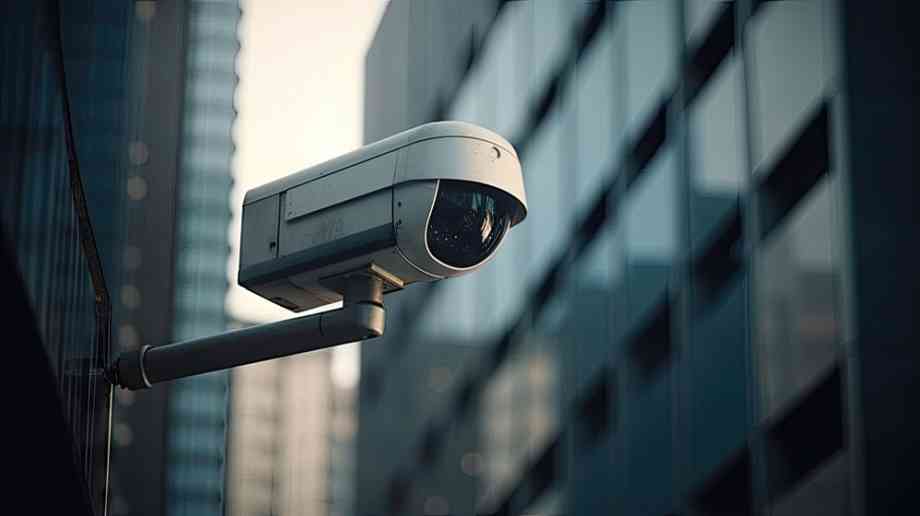
Securing public spaces
Gary Moffatt, director at Chubb Fire & Security explores the benefits of and best practices for security cameras in a changing world, on behalf of the British Security Industry Association (BSIA).
Security cameras have transformed the urban landscape since they were first introduced in the UK in the 1960s. Initially employed by the Metropolitan Police for specific events like Guy Fawkes Day, their use rapidly expanded to traffic monitoring and public safety.
Today, they are ubiquitous, with London being the 10th most surveilled city globally, a testament to their integral role in modern security strategies.
Transforming public safety
In recent years, the landscape of public safety has undergone a profound transformation, prompting governments and communities worldwide to adopt innovative measures to ensure the security of public spaces. In the UK, the implementation of security cameras in public places has emerged as a pivotal tool, bolstered by the principles outlined in new counter-terror measures such as Martyn’s Law. As society grapples with evolving security challenges, it becomes essential to explore the benefits of surveillance systems and establish best practices to strike a balance between public safety and individual privacy.
The legal framework governing security cameras
Surveillance camera systems in the UK operate within a comprehensive legal framework, ensuring their responsible use. The Data Protection Act 2018, the Protection of Freedoms Act 2012, and the Surveillance Camera Code of Practice 2013, enforced by the Information Commissioner’s Office (ICO), form the backbone of this regulatory environment. These laws mandate transparency, legitimate purpose, and respect for privacy in the operation of CCTV systems.
The introduction of Martyn’s Law
Martyn’s Law is a proposed piece of legislation that aims to improve public safety and prevent terrorism by requiring venues and public spaces to put in place effective security measures – which include CCTV. Protect Duty, to be known as Martyn’s Law, will scale up preparedness for, and protection from, terrorist attacks. The name Martyn’s Law is a tribute to 29-year-old Martyn Hett, who was killed alongside 21 others in the Manchester Arena terrorist attack in 2017. There have been 14 terror attacks in the UK since then.
The draft bill was published in May 2023 and it is currently working its way through Parliament. The plans have been developed following public consultation and extensive engagement across industry, charities, local authorities, security experts and survivors – as well as Martyn’s mother Figen Murray and the Martyn’s Law Campaign Team, and Survivors Against Terror - to draw up the new legislation. Seventy per cent of the thousands who responded to the consultation agreed that those responsible for publicly accessible locations should take measures to protect the public from potential attacks. If the draft legislation is passed, Martyn’s Law will require venues to take steps to improve public safety. Premises will fall under the scope of Martyn’s Law where ‘qualifying activities’ take place – which includes locations for entertainment and leisure, retail, food and drink, museums and galleries, sports grounds, public areas of local and central Government buildings, visitor attractions, places of worship, health, and education.
There are five requirements to Martyn’s Law: that spaces and places to which the public have access engage with freely available counter-terrorism advice and training; places must conduct vulnerability assessments; they must mitigate the risks created by the vulnerabilities; they must have a terrorism plan; local authorities must plan for the threat of terrorism. Steps to be taken depend on the size of the venue and the activity taking place. Martyn’s Law will follow a tiered model linked to activity that takes place at a location and its capacity aimed to prevent undue burden on businesses. A standard tier will apply to locations with a maximum capacity of more than 100 which can undertake low-cost, simple yet effective activities to improve preparedness.
An enhanced tier will focus on locations with a capacity of more than 800 people. High-capacity locations will also be required to undertake a risk assessment to inform the development and implementation of a thorough security plan. Subsequent measures could include developing a vigilance and security culture, implementation of physical measures like CCTV, and processes to enable better consideration of security.
CCTV’s role in crime prevention and public reassurance
CCTV is designed to help prevent and detect crime, provide reassurance over community safety, as well as provide evidence in the aftermath of a crime. Surveillance footage forms a key component of the crime prevention strategy in the UK.
Cameras have been found to reduce crime rates in targeted areas, tackling both crime and the fear of crime, and boosting both perceived and actual public safety levels. CCTV cameras are credited with a crucial role in solving the Sarah Everard case.
Detectives leading the case combed through thousands of hours of CCTV footage to piece together the 33-year-old’s final moments as she walked home through London – and helped to identify her murderer.
Ninety-five per cent of murder cases investigated by Scotland Yard use CCTV footage as crucial evidence and it has become invaluable for traffic offences. As well as providing crucial evidence to relevant enforcement agencies, CCTV can be used to maintain public order, prevent antisocial behaviour, provide reassurance and promote economic well-being. There is a huge cost saving when using CCTV surveillance systems to guard perimeters compared to physical security measures. Remote security monitoring offers many of the same advantages as manned guarding at a fraction of the cost whilst providing the same visual deterrent.
Comprehensive CCTV solutions
Security and access control systems can create a blueprint of building usage, allowing an increased understanding of who is in the property and when. Responding to how a building is used is key to directing resources effectively and ensuring optimum user experience. Video Content Analysis (VCA) has taken CCTV security to a whole new level. It has given security professionals the ability to assess video scenes and identify vehicles, people, and even animals, as opposed to other scene changes such as shrubbery movement. The video data generated by IP CCTV cameras give security teams better situational awareness.
They can use the data to process, categorise, and analyse objects and activities. It can identify temporal shapes, spatial events, and even direction of travel. These powerful capabilities are significantly changing the face of CCTV. The level of security is far more powerful, accurate, and efficient. In a real-life scenario, for example, Video Content Analysis can pinpoint a security breach by analysing a person’s movements.
It can tell the difference between a routine ID card swipe at reception and an intruder jumping a barrier or breaking down a door. CCTV is not just for emergency incidents, as smart temperature monitoring camera systems can also help manage a safe return to the office or workspace in a post-pandemic era.
Society can strike a delicate balance
As the security landscape continues to evolve, it is imperative to remain vigilant and adaptable. The ongoing development of surveillance technologies, combined with robust legal frameworks, promises to further enhance public safety while respecting privacy.


